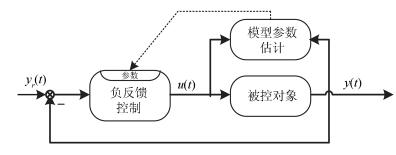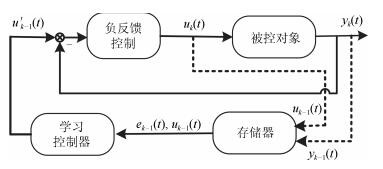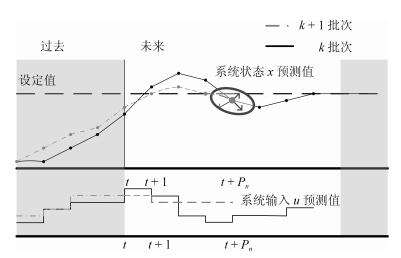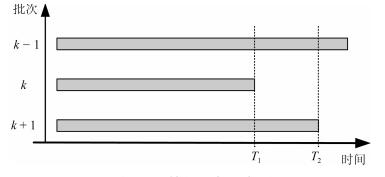|
[1]
|
Stephanopoulos G. Chemical Process Control: An Introduction to Theory and Practice. Englewood Cliffs, N.J.: PTR Prentice Hall, 1984.
|
|
[2]
|
Liu T, Gao F R. Industrial Process Identification and Control Design. Berlin: Springer-Verlag, 2012.
|
|
[3]
|
Bonvin D. Control and optimization of batch processes. IEEE Control Systems, 2006, 26(6): 34-45 doi: 10.1109/MCS.2006.252831
|
|
[4]
|
Yang Y. Injection Molding Control: from Process to Quality[Ph.D. dissertation], Hong Kong University of Science and Technology, China, 2004.
|
|
[5]
|
Camacho E F, Alba C B. Model Predictive Control. London: Springer Science & Business Media, 2013.
|
|
[6]
|
Mayne D Q, Rawlings J B, Rao C V, Scokaert P. Constrained model predictive control: stability and optimality. Automatica, 2000, 36: 789-814 doi: 10.1016/S0005-1098(99)00214-9
|
|
[7]
|
陈虹, 刘志远, 解小华.非线性模型预测控制的现状与问题.控制与决策, 2001, 16(4): 385-391 http://www.cnki.com.cn/Article/CJFDTOTAL-KZYC200104000.htmChen Hong, Liu Zhi-Yuan, Xie Xiao-Hua. Nonlinear model predictive control: the state and open problems. Control and Decision, 2001, 16(4): 385-391 http://www.cnki.com.cn/Article/CJFDTOTAL-KZYC200104000.htm
|
|
[8]
|
Qin S J, Badgwell T A. A survey of industrial model predictive control technology. Control Engineering Practice, 2003, 11(7): 733-764 doi: 10.1016/S0967-0661(02)00186-7
|
|
[9]
|
席裕庚, 李德伟, 林姝.模型预测控制——现状与挑战.自动化学报, 2013, 39(3): 222-236 http://www.aas.net.cn/CN/abstract/abstract17874.shtmlXi Yu-Geng, Li De-Wei, Lin Shu. Model predictive control: status and challenges. Acta Automatica Sinica, 2013, 39(3): 222-236 http://www.aas.net.cn/CN/abstract/abstract17874.shtml
|
|
[10]
|
范家璐, 张也维, 柴天佑.一类工业过程运行反馈优化控制方法.自动化学报, 2015, 41(10): 1754-1761 http://www.aas.net.cn/CN/abstract/abstract18749.shtmlFan Jia-Lu, Zhang Ye-Wei, Chai Tian-You. Optimal operational feedback control for a class of industrial processes. Acta Automatica Sinica, 2015, 41(10): 1754-1761 http://www.aas.net.cn/CN/abstract/abstract18749.shtml
|
|
[11]
|
何德峰.约束非线性系统稳定经济模型预测控制.自动化学报, 2016, 42(11): 1680-1690 http://www.aas.net.cn/CN/abstract/abstract18957.shtmlHe De-Feng. Stabilizing economic model predictive control of constrained nonlinear systems. Acta Automatica Sinica, 2016, 42(11): 1680-1690 http://www.aas.net.cn/CN/abstract/abstract18957.shtml
|
|
[12]
|
Morari M, Zafiriou E. Robust Process Control. Englewood Cliffs, N.J.: Prentice hall, 1989.
|
|
[13]
|
Zhou K M, Doyle J C. Essentials of Robust Control. Upper Saddle River, N.J.: Prentice Hall, 1998.
|
|
[14]
|
Wang T, Gao H J, Qiu J B. A combined adaptive neural network and nonlinear model predictive control for multirate networked industrial process control. IEEE Transactions on Neural Networks and Learning Systems, 2016, 27(2): 416-425 doi: 10.1109/TNNLS.2015.2411671
|
|
[15]
|
Bellman R E. Adaptive Control Processes: A Guided Tour. Princeton: Princeton University Press, 2015.
|
|
[16]
|
Kumar P R, Varaiya P. Stochastic Systems: Estimation, Identification, and Adaptive Control. Upper Saddle River, N.J., USA: Prentice-Hall, Inc., 1986.
|
|
[17]
|
Yang Y, Gao F R. Injection velocity control using a self-tuning adaptive controller. International Polymer Processing, 1999, 14(2): 196-204 doi: 10.3139/217.1537
|
|
[18]
|
Yang Y, Gao F R. Adaptive control of the filling velocity of thermoplastics injection molding. Control Engineering Practice, 2000, 8(11): 1285-1296 doi: 10.1016/S0967-0661(00)00060-5
|
|
[19]
|
Nagy Z, Agachi S. Model predictive control of a PVC batch reactor. Computer & Chemical Engineering, 1997, 21(6): 571-591
|
|
[20]
|
Nagy Z K, Braatz R D. Robust nonlinear model predictive control of batch processes. AIChE Journal, 2003, 49(7): 1776-1786 doi: 10.1002/(ISSN)1547-5905
|
|
[21]
|
Tian Y, Zhang J, Morris J. Modeling and optimal control of a batch polymerization reactor using a hybrid stacked recurrent neural network model. Industrial & Engineering Chemistry Research, 2001, 40(21): 4525-4535
|
|
[22]
|
Mujtaba I M, Aziz N, Hussain M. Neural network based modelling and control in batch reactor. Chemical Engineering Research and Design, 2006, 84(8): 635-644 doi: 10.1205/cherd.05096
|
|
[23]
|
Lee J H, Lee K S. Iterative learning control applied to batch processes: an overview. Control Engineering Practice, 2007, 15(10): 1306-1318 doi: 10.1016/j.conengprac.2006.11.013
|
|
[24]
|
Zhu Q, Xu J X, Huang D Q, Hu G D. Iterative learning control design for linear discrete-time systems with multiple high-order internal models. Automatica, 2015, 62: 65-76 doi: 10.1016/j.automatica.2015.09.017
|
|
[25]
|
Wang D W. On D-type and P-type ILC designs and anticipatory approach. International Journal of Control, 2000, 73(10): 890-901 doi: 10.1080/002071700405879
|
|
[26]
|
Chen Y Q, Moore K L. PI-type iterative learning control revisited. In: Proceedings of the 2002 American Control Conference. Anchorage, AK, USA: IEEE, 2002, 3: 2138-2143
|
|
[27]
|
Park K H. A study on the robustness of a PID-type iterative learning controller against initial state error. International Journal of Systems Science, 1999, 30(1): 49-59 doi: 10.1080/002077299292669
|
|
[28]
|
Chen Y Q, Gong Z M, Wen C Y. Analysis of a high-order iterative learning control algorithm for uncertain nonlinear systems with state delays. Automatica, 1998, 34(3): 345-353 doi: 10.1016/S0005-1098(97)00196-9
|
|
[29]
|
Yin S, Li X W, Gao H J, Kaynak O. Data-based techniques focused on modern industry: an overview. IEEE Transactions on Industrial Electronics, 2015, 62(1): 657-667 doi: 10.1109/TIE.2014.2308133
|
|
[30]
|
Tanaskovic M, Fagiano L, Novara C, Morari M. Data-driven control of nonlinear systems: an on-line direct approach. Automatica, 2017, 75: 1-10 doi: 10.1016/j.automatica.2016.09.032
|
|
[31]
|
Owens D H, Feng K. Parameter optimization in iterative learning control. International Journal of Control, 2003, 76(11): 1059-1069 doi: 10.1080/0020717031000121410
|
|
[32]
|
Owens D H. Norm optimal iterative learning control. Iterative Learning Control, London: Springer, 2016. 233-276
|
|
[33]
|
Zhao Y M, Lin Y, Xi F F, Guo S. Calibration-based iterative learning control for path tracking of industrial robots. IEEE Transactions on Industrial Electronics, 2015, 62(5): 2921-2929 doi: 10.1109/TIE.2014.2364800
|
|
[34]
|
Son T D, Pipeleers G, Swevers J. Robust monotonic convergent iterative learning control. IEEE Transactions on Automatic Control, 2016, 61(4): 1063-1068 doi: 10.1109/TAC.2015.2457785
|
|
[35]
|
Ge X, Stein J L, Ersal T, Goele P, Swevers J. Frequency-domain analysis of robust monotonic convergence of norm-optimal iterative learning control. IEEE Transactions on Control Systems Technology, 2017. DOI: 10.1109/TCST.2017.2692729
|
|
[36]
|
Gao F R, Yang Y, Shao C. Robust iterative learning control with applications to injection molding process. Chemical Engineering Science, 2001, 56(24): 7025-7034 doi: 10.1016/S0009-2509(01)00339-6
|
|
[37]
|
Xu Z H, Zhao J, Yang Yi, Shao Z J. Robust iterative learning control with quadratic performance index. Industrial & Engineering Chemistry Research, 2012, 51(2): 872-881
|
|
[38]
|
Chi R H, Wang D W, Hou Z S, Jin S T. Data-driven optimal terminal iterative learning control. Journal of Process Control, 2012, 22(10): 2026-2037 doi: 10.1016/j.jprocont.2012.08.001
|
|
[39]
|
Chi R H, Hou Z S, Huang B, Jin S T. A unified data-driven design framework of optimality-based generalized iterative learning control. Computers & Chemical Engineering, 2015, 77: 10-23
|
|
[40]
|
Xiong Z H, Zhang J. A batch-to-batch iterative optimal control strategy based on recurrent neural network models. Journal of Process Control, 2005, 15(1): 11-21 doi: 10.1016/j.jprocont.2004.04.005
|
|
[41]
|
Zhang J. Batch-to-batch optimal control of a batch polymerisation process based on stacked neural network models. Chemical Engineering Science, 2008, 63(5): 1273-1281 doi: 10.1016/j.ces.2007.07.047
|
|
[42]
|
Jia L, Shi J P, Chiu M S. Integrated neuro-fuzzy model and dynamic R-parameter based quadratic criterion-iterative learning control for batch process. Neurocomputing, 2012, 98: 24-33 doi: 10.1016/j.neucom.2011.05.046
|
|
[43]
|
Jang J S R, Sun C T. Neuro-fuzzy modeling and control. Proceedings of IEEE, 1995, 83(3): 378-406 doi: 10.1109/5.364486
|
|
[44]
|
Lee K S, Chin I S, Lee H J, Lee J H. Model predictive control technique combined with iterative learning for batch processes. AIChE Journal, 1999, 45(10): 2175-2187 doi: 10.1002/(ISSN)1547-5905
|
|
[45]
|
Natarajan S, Lee J H. Repetitive model predictive control applied to a simulated moving bed chromatography system. Computers & Chemical Engineering, 2000, 24(2-7): 1127-1133
|
|
[46]
|
Lee S K, Lee J H. Convergence of constrained model-based predictive control for batch processes. IEEE Transactions on Automatic Control, 2000, 45(10): 1928-1932 doi: 10.1109/TAC.2000.881002
|
|
[47]
|
Chin I, Qin S J, Lee K S, Cho M. A two-stage iterative learning control technique combined with real-time feedback for independent disturbance rejection. Automatica, 2004, 40(11): 1913-1922 doi: 10.1016/j.automatica.2004.05.011
|
|
[48]
|
Liu T, Gao F R, Wang Y Q. IMC-based iterative learning control for batch processes with uncertain time delay. Journal of Process Control, 2010, 20(2): 173-180 doi: 10.1016/j.jprocont.2009.10.008
|
|
[49]
|
Wang Y Q, Doyle F J. Indirect iterative learning control: application on artificial pancreatic β-cell. In: Proceedings of the 2009 Chinese Control and Decision Conference. Guilin, China: IEEE, 2009. 1728-1733
|
|
[50]
|
Wang Y Q, Doyle F J. Stability analysis for set-point-related indirect iterative learning control. In: Proceedings of the 48th IEEE Conference on Decision and Control, Jointly with the 28th Chinese Control Conference. Shanghai, China: IEEE, 2009. 5702-5707
|
|
[51]
|
杨跃男, 王友清.内模强化学习型模型预测控制及其在人工胰脏上的应用.控制理论与应用, 2012, 29(8): 1057-1062 http://www.cnki.com.cn/Article/CJFDTOTAL-KZLY201208015.htmYang Yue-Nan, Wang You-Qing. Internal model control-enhanced learning-type model predictive control: application to artificial pancreas. Control Theory & Applications, 2012, 29(8): 1057-1062 http://www.cnki.com.cn/Article/CJFDTOTAL-KZLY201208015.htm
|
|
[52]
|
Wang Y Q, Yang Y N, Zhao Z. Robust stability analysis for an enhanced ILC-based PI controller. Journal of Process Control, 2013, 23(2): 201-214 doi: 10.1016/j.jprocont.2012.08.004
|
|
[53]
|
Liu T, Wang X Z, Chen J. Robust PID based indirect-type iterative learning control for batch processes with time-varying uncertainties. Journal of Process Control, 2014, 24(12): 95-106 doi: 10.1016/j.jprocont.2014.07.002
|
|
[54]
|
Kaczorek T. Two-dimensional linear systems. Advances in Control. London: Springer, 1999. 283-284
|
|
[55]
|
Du C L, Xie L H. H∞ Control and Filtering of Two-Dimensional Systems. Berlin Heidelberg: Springer, 2002.
|
|
[56]
|
Kurek J E, Zaremba M B. Iterative learning control synthesis based on 2-D system theory. IEEE Transactions on Automatic Control, 1993, 38(1): 121-125 doi: 10.1109/9.186321
|
|
[57]
|
Shi J, Gao F R, Wu T J. Robust design of integrated feedback and iterative learning control of a batch process based on a 2D Roesser system. Journal of Process Control, 2005, 15(8): 907-924 doi: 10.1016/j.jprocont.2005.02.005
|
|
[58]
|
Liu T, Gao F R. Robust two-dimensional iterative learning control for batch processes with state delay and time-varying uncertainties. Chemical Engineering Science, 2010, 65(23): 6134-6144 doi: 10.1016/j.ces.2010.08.031
|
|
[59]
|
Shi J, Gao F R, Wu T J. From two-dimensional linear quadratic optimal control to iterative learning control. Paper 1. Two-dimensional linear quadratic optimal controls and system analysis. Industrial & Engineering Chemistry Research, 2006, 45(13): 4603-4616
|
|
[60]
|
Shi J, Gao F R, Wu T J. From two-dimensional linear quadratic optimal control to iterative learning control. Paper 2. Iterative learning controls for batch processes. Industrial & Engineering Chemistry Research, 2006, 45(13): 4617-4628
|
|
[61]
|
Shi J, Gao F R, Wu T J. Robust iterative learning control design for batch processes with uncertain perturbations and initialization. AIChE Journal, 2006, 52(6): 2171-2187 doi: 10.1002/(ISSN)1547-5905
|
|
[62]
|
Wang Y Q, Shi J, Zhou D H, Gao F R. Iterative learning fault-tolerant control for batch processes. Industrial & Engineering Chemistry Research, 2006, 45(26): 9050-9060
|
|
[63]
|
Wang Y Q, Zhou D H, Gao F R. Iterative learning reliable control of batch processes with sensor faults. Chemical Engineering Science, 2008, 63(4): 1039-1051 doi: 10.1016/j.ces.2007.11.005
|
|
[64]
|
Zhang R D, Gan L Z, Lu J Y, Gao F R. New design of state space linear quadratic fault-tolerant tracking control for batch processes with partial actuator failure. Industrial & Engineering Chemistry Research, 2013, 52(46): 16294-16300
|
|
[65]
|
Zhang R D, Lu J Y, Qu H Y, Gao F R. State space model predictive fault-tolerant control for batch processes with partial actuator failure. Journal of Process Control, 2014, 24(5): 613-620 doi: 10.1016/j.jprocont.2014.03.004
|
|
[66]
|
Gao M, Sheng L, Zhou D H, Gao F R. Iterative learning fault-tolerant control for networked batch processes with multirate sampling and quantization effects. Industrial & Engineering Chemistry Research, 2017, 56(9): 2515-2525
|
|
[67]
|
Wang L M, Mo S Y, Zhou D H, Gao F R, Chen X. Delay-range-dependent robust 2D iterative learning control for batch processes with state delay and uncertainties. Journal of Process Control, 2013, 23(5): 715-730 doi: 10.1016/j.jprocont.2013.02.009
|
|
[68]
|
Wang L M, Yu J X, Shi J, Gao F R. Delay-range dependent H∞ control for uncertain 2D-delayed systems. Numerical Algebra, Control and Optimization, 2015, 5(1): 11-23 doi: 10.3934/naco
|
|
[69]
|
Shi J, Gao F R, Wu T J. Single-cycle and multi-cycle generalized 2D model predictive iterative learning control (2D-GPILC) schemes for batch processes. Journal of Process Control, 2007, 17(9): 715-727 doi: 10.1016/j.jprocont.2007.02.002
|
|
[70]
|
Mo S Y, Wang L M, Yao Y, Gao F R. Two-time dimensional dynamic matrix control for batch processes with convergence analysis against the 2D interval uncertainty. Journal of Process Control, 2012, 22(5): 899-914 doi: 10.1016/j.jprocont.2012.03.002
|
|
[71]
|
Cao Z X, Yang Y, Lu J Y, Gao F R. Two-time-dimensional model predictive control of weld line positioning in bi-injection molding. Industrial & Engineering Chemistry Research, 2015, 54(17): 4795-4804
|
|
[72]
|
Wang Y Q, Zhou D H, Gao F R. Iterative learning model predictive control for multi-phase batch processes. Journal of Process Control, 2008, 18(6): 543-557 doi: 10.1016/j.jprocont.2007.10.014
|
|
[73]
|
Lu J Y, Cao Z Z, Wang Z, Gao F R. A two-stage design of two-dimensional model predictive iterative learning control for nonrepetitive disturbance attenuation. Industrial & Engineering Chemistry Research, 2015, 54(21): 5683-5689
|
|
[74]
|
Liu T, Wang Y Q. A synthetic approach for robust constrained iterative learning control of piecewise affine batch processes. Automatica, 2012, 48(11): 2762-2775 doi: 10.1016/j.automatica.2012.08.026
|
|
[75]
|
Li D W, Xi Y G, Lu J Y, Gao F R. Synthesis of real-time-feedback-based 2D iterative learning control-model predictive control for constrained batch processes with unknown input nonlinearity. Industrial & Engineering Chemistry Research, 2016, 55(51): 13074-13084
|
|
[76]
|
Lu J Y, Cao Z X, Gao F R. A stable two-time dimensional (2D) model predictive control with zero terminal state constraints for constrained batch processes. IFAC-PapersOnLine, 2015, 48(8): 514-519 doi: 10.1016/j.ifacol.2015.09.019
|
|
[77]
|
Lu J Y, Cao Z X, Gao F R. Ellipsoid invariant set-based robust model predictive control for repetitive processes with constraints. IET Control Theory & Applications, 2016, 10(9): 1018-1026
|
|
[78]
|
Gorinevsky D M. Iterative Learning Update for Batch Mode Processing, U.S. Patent 6647354, November 2003.
|
|
[79]
|
Takagi K. Position Control Apparatus Including Iterative Learning Circuit, Exposure Apparatus, Method for Manufacturing Device, and Iterative Learning Method for Use in Position Control Apparatus Having Iterative Learning Circuit Including Learning Filter, U.S. Patent 8676355, March 2014.
|
|
[80]
|
Nie J B, Sheh E D, Weerasooriy S S. Disk Drive Adapting Feed-Forward Compensation Using Iterative Learning Control Over Segments of Seek Length, U.S. Patent 8902535, December 2014.
|
|
[81]
|
Havlena V, Horak J, Jelinek J. Polymerization Process Controller, U.S. Patent 6106785, August 2000.
|
|
[82]
|
Austin D P. Batch Process for Refining Used Oil, U.S. Patent WO/2002/011850, February 2002.
|
|
[83]
|
Kanodia H, Davidsson M H, Nair R, Poorman A, Ruhe J, Martin P M. System for Analyzing Batch Processes, U.S. Patent 7894918, February 2011.
|
|
[84]
|
Predina J P, Broberg H L. Tuned Open-Loop Switched to Closed-Loop Method for Rapid Point-to-Point Movement of a Periodic Motion Control System, U.S. Patent 6686716, February 2004.
|
|
[85]
|
Stevenson J F, Marsh G, LaSalle J C, Behi M. Recycle Methods for Water Based Powder Injection Molding Compounds, U.S. Patent 6776954, August 2004.
|
|
[86]
|
Himberg J, Mannila H, Korpiaho K, Toivonen H T T, Tikanmaki J. Method for Controlling Operation of a Mobile Device by Detecting Usage Situations, U.S. Patent 6912386, June 2005.
|
|
[87]
|
Finan D, McCann T. Method and System for a Hybrid Control-to-Target and Control-to-Range Model Predictive Control of an Artificial Pancreas, U.S. Patent WO/2014/099882, June 2014.
|
|
[88]
|
Dobbles J M, Kamath A U, Mahalingam A, Brauker J H. Integrated Insulin Delivery System with Continuous Glucose Sensor, U.S. Patent 9572935, February 2017.
|
|
[89]
|
Li X, Xu J, Huang D. An iterative learning control approach for linear systems with randomly varying trial lengths. IEEE Transactions on Automatic Control, 2014, 7: 1954-1960
|
|
[90]
|
Li X F, Xu J Z, Huang D Q. Iterative learning control for nonlinear dynamic systems with randomly varying trial lengths. International Journal of Adaptive Control and Signal Processing, 2015, 29(11): 1341-1353 doi: 10.1002/acs.v29.11
|
|
[91]
|
Shen D, Zhang W, Wang Y Q, Chien C J. On almost sure and mean square convergence of P-type ILC under randomly varying iteration lengths. Automatica, 2016, 63: 359-365 doi: 10.1016/j.automatica.2015.10.050
|
|
[92]
|
Xu Z H, Zhao J, Yang Y, Shao Z J, Gao F R. Optimal iterative learning control based on a time-parametrized linear time-varying model for batch processes. Industrial & Engineering Chemistry Research, 2013, 52(18): 6182-6192 doi: 10.1021/ie302561t
|
|
[93]
|
Cao Z X, Yang Y, Lu J Y, Gao F R. Constrained two dimensional recursive least squares model identification for batch processes. Journal of Process Control, 2014, 24(6): 871-879 doi: 10.1016/j.jprocont.2014.04.002
|
|
[94]
|
Cao Z X, Zhang R D, Lu J Y, Gao F R. Online identification for batch processes in closed loop incorporating priori controller knowledge. Computers & Chemical Engineering, 2016, 90: 222-233 http://www.sciencedirect.com/science/article/pii/S0098135416301211
|
|
[95]
|
Cao Z X, Zhang R D, Lu J Y, Gao F R. Two-time dimensional recursive system identification incorporating priori pole and zero knowledge. Journal of Process Control, 2016, 39: 100-110 doi: 10.1016/j.jprocont.2015.12.011
|
|
[96]
|
Cao Z X, Yang Y, Yi H, Gao F R. Priori knowledge-based online batch-to-batch identification in a closed loop and an application to injection molding. Industrial & Engineering Chemistry Research, 2016, 55(32): 8818-8829 doi: 10.1021/acs.iecr.6b01900?journalCode=iecred
|
|
[97]
|
Srinivasan B, Palanki S, Bonvin D. Dynamic optimization of batch processes: Ⅰ. Characterization of the nominal solution. Computers & Chemical Engineering, 2003, 27(1): 1-26
|
|
[98]
|
Srinivasan B, Palanki S, Bonvin D. Dynamic optimization of batch processes: Ⅱ. Role of measurements in handling uncertainty. Computers & Chemical Engineering, 2003, 27(1): 27-44
|
|
[99]
|
Ruppen D, Benthack C, Bonvin D. Optimization of batch reactor operation under parametric uncertainty-computational aspects. Journal of Process Control, 1995, 5(4): 235-240 doi: 10.1016/0959-1524(95)00015-I
|
|
[100]
|
Kong X S, Yang Y, Chen X, Shao Z J, Gao F R. Quality control via model-free optimization for a type of batch process with a short cycle time and low operational cost. Industrial & Engineering Chemistry Research, 2011, 50(5): 2994-3003
|
|
[101]
|
Yang Y, Yang B, Zhu S Q, Chen X. Online quality optimization of the injection molding process via digital image processing and model-free optimization. Journal of Materials Processing Technology, 2015, 226: 85-98 doi: 10.1016/j.jmatprotec.2015.07.001
|
|
[102]
|
Cao Z X, Durr H B, Ebenbauer C, Allgower F, Gao F R. Iterative learning and extremum seeking for repetitive time-varying mappings. IEEE Transactions on Automatic Control, 2016, DOI: 10.1109/TAC.2016.2633724
|
|
[103]
|
Ariyur K B, Krstic M. Real-Time Optimization by Extremum-Seeking Control. Hoboken, N.J.: John Wiley & Sons, 2003.
|
|
[104]
|
Lu J D, Yao K, Gao F R. Process similarity and developing new process models through migration. AIChE Journal, 2009, 55(9): 2318-2328 doi: 10.1002/aic.v55:9
|
|
[105]
|
Luo L K, Yao Y, Gao F R. Iterative improvement of parameter estimation for model migration by means of sequential experiments. Computers & Chemical Engineering, 2015, 73: 128-140
|
|
[106]
|
Luo L K, Yao Y, Gao F R. Bayesian improved model migration methodology for fast process modeling by incorporating prior information. Chemical Engineering Science, 2015, 134: 23-35 doi: 10.1016/j.ces.2015.04.045
|
|
[107]
|
Luo L K, Yao Y, Gao F R. Cost-effective process modeling and optimization methodology assisted by robust migration techniques. Industrial & Engineering Chemistry Research, 2015, 54(21): 5736-5748
|




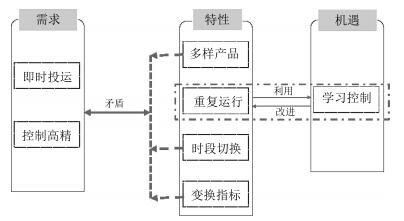
 下载:
下载:
